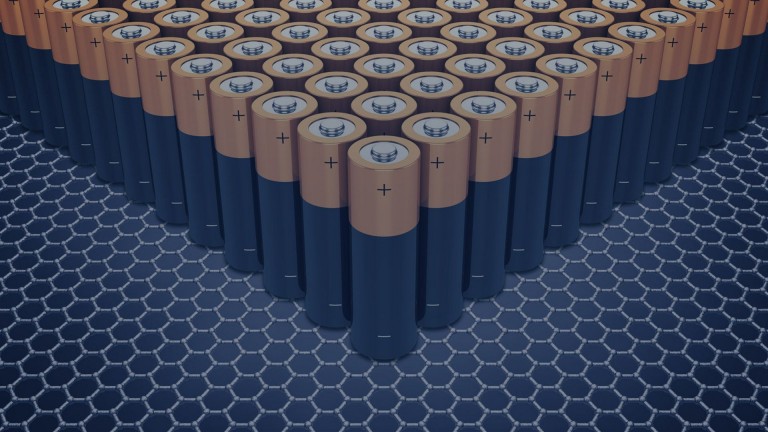Nobel prize winners sparked the lithium-ion battery revolution

Looking back on the year in science, the coolest advances seem to be coming in areas such as gene editing and quantum computing. This is sexy research pointing with confidence to the future. Yet we should remember that some of the most important scientific discoveries take place almost without notice, in seemingly boring fields like materials science or chemistry.
Indeed, nearly all of the roughly 5 billion mobile phones now in use run on compact lithium-ion batteries, which didn’t exist before 1991. Without this technology — based on subtle advances in chemistry — a lightweight smartphone would feel more like a brick, and the mobile communications revolution would never have happened. The scientists behind this battery revolution were awarded this year’s Nobel Prize in chemistry, and their research illustrates just how tricky it is to store chemical energy safely and reliably in compact pieces of matter.
Nearly all of the roughly 5 billion mobile phones now in use run on compact lithium-ion batteries, which didn’t exist before 1991
Most cars and trucks today still carry lead-acid batteries, a technology originally invented in 1860. But scientists have long suspected that the element lithium might offer a pathway to smaller, lighter batteries that pack more energy. Lithium is the lightest of all metals, and it has a strong tendency to give up electrons to other materials, a useful property for generating voltage.
The key to making lithium work lay in certain solid materials, arranging their atoms in parallel sheets with space in between. In the 1970s, while working at Exxon Corp., chemist Michael Stanley Whittingham discovered that one such material — titanium disulphide, or TiS2 — could temporarily store lithium ions in the spaces between parallel sheets of titanium and sulphur atoms. With this material making up one electrode of a battery, an electric charge could be put in and later taken out, a reversible process that made the battery rechargeable.
Unfortunately, the TiS2 battery was also prone to short circuits and fires, and Exxon soon abandoned this line of research. In 1980, another chemist, John Goodenough of Oxford University, found that a different material — cobalt oxide, or CoO2 — was even more useful. As with TiS2, CoO2 will take up lithium ions and store them between sheets of cobalt or oxygen. Using this material for the cathode of a battery, Goodenough’s team was able to generate a voltage much higher than that of the TiS2 battery. It could also store lots of energy, allowing for longer life between recharges.
But these batteries were still too dangerous for commercial use. The safety issue was only conquered in the early 1990s by Japanese chemist Akira Yoshino, working at the Asahi Kasei Corp., who found a way to use more stable solid materials. His work illustrates how technology can advance in unexpected ways.
Yoshino first tried to use a recently discovered conducting polymer, and when that didn’t work, he turned to growing materials from carbon fibers. That was also a dead end. He finally began exploring a coal-black byproduct of petroleum refining known as petroleum coke. When treated in the right way with heat, this layered, carbon-based material turned out to have an unusual structure that quite accidentally protected the material’s ability to repeatedly take in and give up lithium ions without being damaged.
These three discoveries resulted in the creation of safe batteries carrying useful energy, small enough to fit in your hand. Thirty years later, scientists face similar challenges in trying to create a new generation of even better batteries that are able to store the much larger energies need to power electric vehicles. That research is in full swing — the search for new, surprising properties in still more exotic materials.
Who says chemistry is boring?
(By Mark Buchanan)
More News
{{ commodity.name }}
{{ post.title }}
{{ post.date }}

Comments